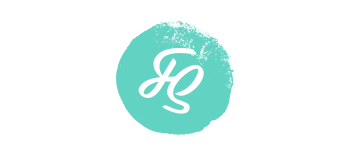Cash Flow management is an artform that any entrepreneur or business owner should learn. Managing the time between paying expenses and collecting revenue can be tricky and if done improperly, could destroy a company. In fact, poor cash flow management is one of the most common business killers around. Refining cash flow management will give your business the right environment to grow at a sustainable pace.
We’ve compiled a list of tips to help you navigate your cash flow wisely.
Think ahead
Forecasting
Assuming a shortfall
Assume from the beginning that at some point you will be short on funds. Arrange for credit from your bank while your business is in a strong financial position so that you have access to the facility when you need it most. It will be harder to get credit when your business looks like it is running at a loss.
Maintain the day-to-day
Use an accountant
Accounting software like www.xero.com can go a long way to help you manage daily bookkeeping, but accountants add value in other areas such as
- Ensuring that you are compliant and thereby helping you avoid unnecessary fines.
- Giving insight into your company’s financial situation.
- Identifying potential issues or upcoming blockages to your cash flow.
- Offering business advice based on an in-depth understanding of your financial picture.
While it may be tempting to DIY your tax returns, this could end up costing you even more. Accountants are well versed in the art of tax and they can save you money in places you would not have thought to look.
Keep expenses down
Keep expenses low but don’t skimp too much. This means finding a good balance between essential expenditure and future “nice-to-haves”. For example, cutting on marketing spend could throttle your business growth but cutting on office lunches would have less of an impact on your income.
Use your data
Quite often cash can be tied up in inventory. Look at your sales data and keep stock of the items that sell well and liquidate stock that is standing stagnant by:
- Putting them on sale
- Bundling them with other items
- Motivate them as impulse purchases
- Sell them on online marketplaces
- Offer them as free gifts with purchase to improve sales
Build a Cash reserve
Where possible, set money aside for a “rainy day”. In times of excess, start contributing towards a cash reserve that can see you through periods where cash flow is low.
Manage invoicing
Make sure that you are keeping track of unpaid invoices and following up with customers to collect debt as quickly as possible. Even better, make use of tools that help you get paid immediately or faster than usual. This could be debit orders or easy online payment links.
Survive the slump
Suppliers
Suppliers are invested in keeping your business running because it affects their pocket. If you find yourself stuck, ask your trusted suppliers for extended terms. Most likely, if you have maintained a good relationship with them, they would be willing to do this.
Pay the right bills
If it comes down to it and you can’t raise enough cash, you may need to prioritize some bills over others. It may be tempting to pay the smallest ones first. Rather pay the most important ones first, paying crucial suppliers and your employees may be essential to keep your business afloat. Alternatively you can part pay some / all of your suppliers, for example paying 50% of the outstanding bills.
Leverage your assets
Where possible, if you are needing cash in a hurry, evaluate what assets you have available that could be rented out temporarily to get cash into your business. However, be careful not to dispose of assets that you will need to continue generating income.
Consider Invoice factoring or Invoice Financing
As an end-of-the-line solution, you could consider invoice factoring (for B2B businesses) or Invoice financing (for B2C businesses). It is a financial service that converts your outstanding invoices due within 90 days into immediate cash. You can use the cash to keep your business running until such time as the invoices are paid. While this could help you overcome a short term crisis, it could also put your business at risk. We would recommend that you speak to your accountant or financial advisor before taking this step. Look at companies like www.bridgement.com who use your Xero accounting data to provide business finance.
Chat to us
If you would like to chat to us about your cash flow management and strategy, contact our team now: Contact.





